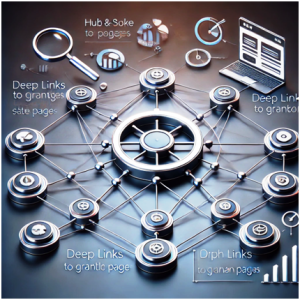Mastering the art of internal linking strategy is no longer a best practice for SEO practitioners but a necessity for securing higher rankings and delivering the best user experience. Even though many highlight how external links take centre stage, internal linking is the unsung hero: it fortifies the site architecture, distributes authority, and guides visitors on a meaningful journey through your content.
Interestingly, a Databox study revealed that 42% of SEO experts spent as much time building internal links as their external ones. It calls for a strategic balance between internal linking and external outreach efforts. Against this background, relevance and user-centricity will play an increasingly significant role as search engines evolve into 2024.
This guide deepens the ultimate internal linking strategies necessary to improve SEO performance. Starting from the page selection, anchor text optimisation, and setting up an efficient content silo, this article is all about the ways you learn to do the right thing to elevate your website’s authority and usability.
Whether you want to increase user engagement, enhance crawl efficiency, or establish yourself as a topical authority, this guide has actionable insights and advanced techniques to future-proof your SEO success. Read on to unlock the full potential of internal linking and transform your website into a well-organised, high-ranking, user-friendly powerhouse.
Understanding Internal Linking: The Basics
Internal links connect pages within the same website. They are used to point one page to another (for instance, link “Page A” to “Page B” on the same domain). Internal links differ from external links, which point to other websites entirely because they are used to organise site structure, distribute page authority, and enhance navigation. Good internal linking enhances user experience and improves SEO.
Types of Internal Links
Navigation Links: Such links usually reside in menus, sidebars, or headers, often pointing to main content pages like “Home” or “Contact.” They are a user map that guides users easily to cornerstone content.
Contextual Links: These links connect related pages or resources embedded within the main content. Contextual links distribute link authority between relevant pages, reinforcing content relationships for search engines and offering users additional context, increasing time spent on the site.
Footer Links: Footer links are typically at the bottom of every page. They often provide functionality like privacy policies to usual pages. Although they have a lesser effect on SEO, they help with usability by making important pages accessible anywhere on the site.
Improving Link Structure for SEO and User Experience (UX)
Internal linking is an essential aspect of good SEO and UX. It helps search engines understand a website’s structure and users navigate content. Therefore, adequately aligned internal links can improve site navigation and search engine rankings because link authority will be spread across crucial pages.
Why is Internal Linking Strategy Important for SEO?
Internal links are part of optimisation as they help search engine crawlers navigate the website, define its structure, and distribute what is defined as “link equity” or ranking power between its various pages.
Internal linking is essential in SEO since it allows Google to evaluate a page’s worth and authority. Google’s ranking system frequently employs the PageRank model, in which connections within your website indicate the significance and relevancy of individual pages. However, through internal links, web admins have complete control over the flow of link equity to make priority pages across the site more viable.
To balance SEO benefits with a smooth UX, we recommend the following:
- Include 2–5 internal links for short-form content (<= 1,000 Words).
- Add 5–10 internal links for long-form content (>2,000 Words).
- Add an internal link approximately every 200–300 words to ensure logical structure, improve navigation, and enhance crawlability.
How Many Internal Links Are Ideal?
Excessive internal linking can dilute the links’ value and puzzle bots’ interpretation of content structures.
According to Google’s Senior Search Analyst John Mueller, too many links may adversely affect SEO because pages with over 150 internal links might not get crawled totally. Furthermore, a Zyppy survey reveals that even though more links are generally linked with higher traffic counts, those carrying over 50 links were showing decreasing traffic figures.
Linking to relevant content that invokes site structure and user experience will help balance things. Thoughtful hierarchy combined with good internal linking will help websites enhance their SEO while enhancing user satisfaction.
How to Set Up an Effective Internal Linking Strategy?
An effective internal linking strategy improves your website’s structure, SEO, and user engagement by guiding users to relevant content, enhancing their experience, boosting engagement, and reducing bounce rates.
An effective internal linking strategy lowers bounce rates by directing readers to more relevant information on your website. As such, it improves engagement and session duration. Strategically located internal links promote smooth navigation, ensuring that visitors access important resources that are relevant to their needs. It motivates users to remain on-site for longer and decreases the possibility that they will leave after seeing a single page.
Good structure, goals, and flow are three things that make up an optimal internal linking strategy. A good structure enhances your website’s authority and engages critical metrics.
Here’s how to set up an internal linking strategy that both benefits user experience and search engine optimisation:
Identify Your Top Most Key Pages
Begin with the core or pillar content and high-traffic pages that would benefit most from the strategic internal linking campaign.
Core content comprises in-depth guides or resources defining your website’s niche. You can find these using Google Analytics or search console data to find pages with the highest traffic, most prolonged session duration, and highest engagement metrics. Once these pages have been established, ensure they receive healthy internal links. Hence, all search engines know they’re your site’s top priority.
The more links go to a page, the greater authority it builds, which helps improve its appearance in the listings.
Defining Goals for Internal Linking Strategy
Before placing links, set clear objectives for your internal linking strategy. Typical goals include reducing bounce rates, boosting session duration, and effectively passing page authority throughout your site.
- When visitors to the site can find related, networked content on the same topic, bounce rates decrease, and they stay on the site longer.
- Session duration can be improved by referencing exciting and related content, which allows users to access multiple pages without hassle.
- Improving page authority flow is about distributing link equity from high-authority pages toward new or low-performing ones to enhance overall page authority across the site.
Mapping Out Content Silos
Content silos are a structured, hierarchical approach. It supports an organised and logical internal linking framework that benefits users and search engines better.
You can establish more substantial topical authority by grouping content into topic clusters and linking related pages to a central hub or pillar page. It also helps Google better understand your site’s layout and content relevance. Implement this by simply creating silos first based on general topics and then organising related subtopics and articles below.
Let’s assume your website is about digital marketing. You can have a silo called “SEO” with subtopics like “Keyword Research,” “On-Page SEO,” and “Link Building.” Each of those subtopics naturally leads to the central pillar page and connects to other subtopics within the same silo.
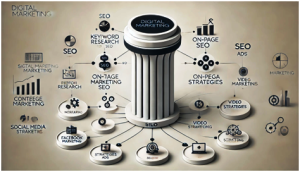
Content silos support a better user experience through more intuitive navigation. However, they will also enhance the strength of SEO by providing a crystal-clear site structure. The structure guides search engines to crawl and interpret the content effectively.
Best SEO Practices for Internal Linking Strategy
Internal linking plays a significant role in proper website architecture and link equity dispersal. The section below elaborates on how internal link optimisation can be carried out practically to form an SEO-friendly site structure.
Proper internal linking implementation guides search engines to crawl your content faster and more efficiently, helping avoid problems such as orphaned pages or broken links. Properly structured internal linking ensures all pages are accessible to search engines through a crawlable link structure. Otherwise, vital pages may be left out of the search engine indices and might never gain visibility and ranks.
The following best practices for 2024 can optimise your internal linking to improve user navigation, make search engine crawling more effective, and maximise SEO success.
1. User-Centric Linking
Use links that are helpful for the reader. Every internal link must provide relevant, value-added information to help users navigate your website without errors. Furthermore, ensure the links answer probable questions or direct the user to resource pages, like links from an overview page to more in-depth guides or relevant product pages.
Example: On the “How to Choose a Digital Lock” post, link the user to a page that details the best digital locks in Singapore.
2. Use Different Anchor Texts
Through different descriptive anchor texts, you avoid over-optimisation and give the user a better understanding of the page. Use primary or secondary keywords organically. Moreover, balance exact-match anchors with partial matches, synonyms, and generic anchors like “read more.”
Example: For instance, replace the multiple “click here” anchors with meaningful descriptions such as “learn advanced link-building strategies” or “discover technical SEO insights.”
3. Link to Cornerstone Content
It will be wise to link often to cornerstone or high-value pages. Cornerstone content is usually long-form guides or category hubs that target competitive keywords and are seen as an authoritative resource.
Example: Throughout blog posts about air conditioning, hyperlinks frequently to a page like “The Complete Guide to Aircon Maintenance.”
4. Leverage Content Relationships
Contextual relevance is critical for effective hyperlinking. Hyperlinked pages should be closely related to the material they link to since this encourages significant user engagement and decreases bounce rates.
For example, connecting a page on “SEO Tools” to one about “Keyword Research Strategies” makes a smooth transition that improves the user experience. Tools like Screaming Frog and Semrush may help you locate similar material and create intelligent and effective hyperlinks.
5. Optimise for Mobile and Accessibility
Consider the following tactics for creating an optimal user experience, especially for mobile users and persons with accessibility needs:
Ø Design Mobile-Friendly Internal Links
- Ensure the internal links are straightforward on mobile phones and tablets.
- Provide white space between links to minimise accidental clicks and improve usability.
Ø Improve Readability with Visual Contrast
- Choose high-contrast colours for links to make them stand out from the backdrop.
- Use underlining or other visual cues to make links easier to identify.
Ø Craft Descriptive Anchor Texts
- Replace generic terms like “click here” with relevant anchor language like “compare models.”
- Descriptive links help consumers comprehend their destination while also improving screen reader accessibility.
6. Strategic Placement
Incorporate internal links in places where you think users are most likely to be interested in:
- Above the fold: Some crucial links are at the front of the page to catch users’ attention.
- In-content contextual: Naturalised into the text to make navigation more accessible.
Example: A blog on “Aircon Troubleshooting” would link to the guide “Common Reasons for Aircon Not Cooling” in the first paragraph.
7. Least Amount of Out-Of-Context Linking
- Do not clutter your pages with too much linking. Doing so frustrates users and effectively waters down link equity.
- Linking should be meaningful and contextual towards flow.
8. Audit Attributes of Links
- Use “dofollow” for internal linking in the same domain to transfer authority.
- No unwanted “nofollow” attributes are applied to the plugin or code settings.
Advanced Internal Linking Strategies
Once you have established an effective internal linking strategy, consider implementing the advanced strategies below. These strategies are tailored to create a seamless user experience and signal relevance to search engines.
Hub-and-spoke content models
A hub-and-spoke model organises content as a central “hub” page with links to detailed subtopic pages, known as spokes. This approach:
- Boosts topical authority: Hub pages rank for broad keywords, while spoke pages get visibility for the more specific, related queries.
- Improves navigation: Users can easily navigate from general to more specific topics, encouraging engagement.
Example: A “2024 SEO Guide” hub might include links to spokes of “Advanced On-Page SEO,” “Technical SEO Tips,” and “Evolving Link-Building Strategies.”
This configuration will make the search engine regard your site as an authoritative source, creating a good ranking on multiple keywords.
Deep Linking for User Journey Optimization
Deep linking guides users to particular, granular pages rather than confining navigation to top-level content. It offers the following advantages:
- Boosts engagement: Increase user engagement through stepped logic in the content flow, reduced bounce rate, and extended session length.
- Supports crawlability: Search engines discover and index deeper content, enhancing overall site authority.
- Implementation Tip: Use deep links in articles like those on blogs or product descriptions. For example, an article on “E-commerce SEO” might link to related pages such as “How to Optimise Meta Descriptions for Products” or “Crafting SEO-Friendly URLs.”
Ensure Discoverability and SEO Integrity
To maintain a solid internal linking structure, ensure that each page on the site has at least one internal link leading to it. Pages lacking internal connections, often orphan pages, can impede indexing and severely diminish their discoverability on search engines.
Tools such as Screaming Frog and Ahrefs help spot orphan pages. Once these pages have been identified, they should be incorporated into the internal linking architecture to increase their exposure and contribute to the overall SEO strategy.
Furthermore, you should conduct an SEO audit and renew your connections regularly. Regular SEO audits help ensure the integrity of the internal linking system, identifying broken links, obsolete anchors, and opportunities to make new, relevant connections. This proactive strategy ensures that your site’s navigation is easy and improves search engine efficiency.
Topic Clusters for Enhanced Link Equity
A topic cluster or web graph interlinks related content around a pillar page. Each page in the cluster links to both the pillar and other cluster members, thereby creating:
- Uniform link distribution: Distributes authority equally, thus enhancing the ranking potential of all pages.
- Search engine clarity: Helps Google understand topic relationships, improving rankings for relevant queries.
- Action Plan: Audit internal links using seoClarity or Ahrefs to identify clustering opportunities.
Leveraging High-Value, Underlinked Pages
Identify high-ranking pages with low internal link counts to serve to amplify their visibility:
- Find opportunities: Use search visibility data to find pages that rank well for competitive keywords but receive fewer internal links.
- Build relationships: Connect these pages from high-authority hubs or other relevant content to increase performance.
Pagination and Breadcrumbs Implementation
Pagination and breadcrumbs enhance user experience and help out with SEO by:
- Navigation: Breadcrumbs indicate a user’s position within the site, while if the content is long-form or multi-part, pagination keeps users moving through it.
- Facilitating crawling: Search engines follow the structured pathways to index all pages effectively.
Example: Breadcrumbs such as Home > Blog > SEO > Internal Linking Strategies offer semantic logical navigation while distributing link equity.
SEO Tools to Simplify Internal Linking in 2024
We have mentioned already that internal linking fulfils the essential functions listed below to enhance overall website performance:
- Helps Google contextualise your website structure
- Connects related content smoothly to improve user navigation
- Facilitates PageRank distribution by passing down authority from high-ranking pages
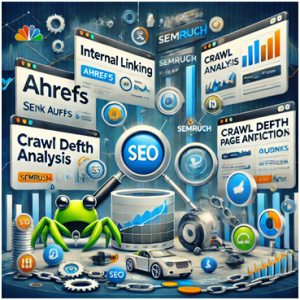
However, managing internal links can become challenging as your website grows, making it essential to leverage the right SEO tools to identify inefficiently and optimise linking opportunities efficiently.
1. Ahrefs
Ahrefs offers robust internal linking features through its multifaceted SEO tools.
- The “Site Audit” feature identifies orphan pages (pages without internal links). It highlights opportunities to integrate them into the site structure.
- The “Internal Backlinks” report presents how pages link internally, helping position high-authority pages to those with lower volumes to distribute PageRank effectively.
2. SEMrush
SEMrush is another excellent tool for competent internal link optimisation.
- The “Site Audit” tool pinpoints pages with no or limited internal links and suggests opportunities for improvement.
- The “Internal Link Analysis” tool lets you map your site’s link structure and strengthen your link hierarchy.
3. Screaming Frog
The Screaming Frog’s SEO Spider truly excels in detailed internal link analysis.
- Its link distribution report helps find pages with too many or too few links, thereby finding balance.
- The report “Crawl Depth” shows a graph of the number of clicks to reach every page and helps to fine-tune link paths for more straightforward navigation.
4. Link Whisper
Link Whisper is specifically developed for WordPress, simplifying internal linking using AI-powered suggestions.
- It automatically finds keyword-related linking opportunities while you write, saving time and ensuring relevance.
- The in-depth report will show pages that use the most and the fewest links, so your links are evenly distributed across the site.
How to Use SEO Tools for Internal Linking Success?
Conduct Link Audit
Begin with a deep crawl of the website using, for example, Ahrefs, SEMrush, or Screaming Frog that can identify:
- Orphan pages and under-linked content
- High-authority pages that can pass link equity to weaker pages
Strategic Link Placement
To build your internal link structure, prioritise links to high-traffic sites and cornerstone content. Link Whisper’s real-time suggestions, particularly for WordPress sites, make this process easier by identifying relevant link chances as you type.
Regular updates and maintenance
Internal links should change as your site grows. Regular audits using these technologies help maintain a consistent linking structure and ensure new information integrates easily.

Common Internal Linking Mistakes and How to Avoid Them
Internal linking is an essential but often overlooked component of a good SEO strategy. While marketers usually prioritise exterior backlinks, internal links are critical in structuring a website’s structure, facilitating navigation, and increasing search engine ranks.
While straightforward, internal linking is prone to errors that can reduce efficacy. Addressing such issues is critical for improving your website’s SEO effectiveness and user experience.
The following are some of the most frequent internal linking problems and practical advice for avoiding them to ensure that the internal linking strategy aligns with audience expectations and SEO standards.
Over-Optimisation of Anchor Text
One of the most common mistakes is over-optimising anchor text using an overabundance of exact-match keywords. While keywords in anchor text are handy, saturation will make your linking strategy look unnatural to search engines. It leads to a perception of trying to game the search, raising the chances that you’ll suffer a penalty.
How to Avoid It: Mix up your anchor texts using a variety of keyword variations, branded terms, and natural phrases. Instead of linking with an “SEO strategy guide” all the time, you can mix it up with a “guide to SEO” or “SEO best practices.” This way, you create a natural linking profile that benefits your overall SEO and users.
Linking to Irrelevant Pages
Another common mistake is linking to nonsensical pages or content that bears no relationship to what is discussed on the page. It creates a lot of link breakup on your site, confusing people who, in turn, devalue your links. Link equity will also be more challenging for search engines to comprehend when nonsense links overwhelm, possibly diluting it.
How to Avoid It: Ensure every internal link makes contextual sense and serves the reader’s intent on that page. For example, if you are discussing SEO strategies, the link should link to relevant content about keyword research, on-page optimisation, or content marketing instead of a generic “About Us” page. It serves topical relevance, both in navigation and in SEO.
Broken Internal Links
Wrong links not only make for a bad visitor experience, but they are also such that they will send incorrect signals to the search engines, causing a severe impact on your rankings. They often happen due to a URL change or a page deletion because of an error during setup. Left unchecked long-term, they waste the crawl budget and decrease site authority.
How to Avoid It: Utilise tools such as Screaming Frog, Ahrefs, or Google Search Console to scan your website and look for broken internal links. Schedule automated scans when you publish numerous articles or posts so that you’ll catch it early.
Broken links must be prioritised to avoid having a bad user experience or losing link equity.
Linking in Non-Indexable Parts
Internal linking in areas such as pop-ups, dropdowns, or sections blocked by JavaScript reduces the SEO power of links because search engines do not crawl or index links in those locations often enough. As a result, a lot of link equity is missed and never gets passed around.
How to Avoid It: Put important internal links in indexable spots that are crawled and accessed both by users and search engines. Please do not rely on the more abused hidden elements such as pop-ups; you must have primary links that are static and visible, like in-content paragraphs or footer links. Such manoeuvres increase crawlability, ensuring link equity flows organically across the site.
Measuring the Impact of Internal Linking Strategy on SEO
What indicators would you use to determine whether your internal linking strategy is effective? What metrics can you utilise to evaluate the effect of your links on your site’s performance, rankings, and traffic?
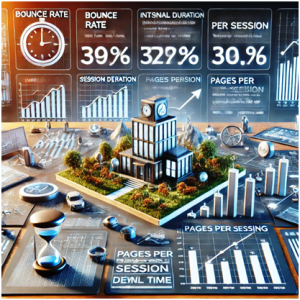
Here’s a detailed explanation of how to evaluate the effectiveness of your internal linking strategy to achieve SEO success in 2024.
Key Metrics to Track
To evaluate the effectiveness of your internal linking strategy, pay special attention to the following indicators:
- Bounce Rate: This is the percentage of visitors to a particular website who navigate away from the site after viewing only one page. A high bounce rate is bad news since it usually means that the visitors are not finding any further content worth their attention or cannot find any other page to click through to. Internal links should be well thought out and assist the user in navigating to other pages on the site, hence minimising the bounce rate.
- Average Time on Page: This is also called the Time on Page or engagement metric. If your internal links direct readers to high-quality, contextually and structurally relevant content, they will explore the topic more.
- Pages per Session: This is a user behaviour limit-breaking metric that defines the number of pages users view in one session. More pages per session are achieved through good internal linking practices that allow the pages to flow around the users, enhancing their engagement with the content.
- Dwell Time: Dwell time is an individual’s time on a particular website after clicking a Search Engine Result Page (SERP) link. A good internal linking strategy can help increase dwell time by designing a sequence that drives the reader through the content in an engaging manner for a long time.
How to Use Google Search Console and Google Analytics?
Content markets set achievable and realistic goals with each internal linking strategy, whether within a single page or cross-page. Thus, performance monitoring and analysis of internal linking are done through Google Search Console and Google Analytics tools.
Google Search Console – Under the report showing ‘Links’, click on the ‘Internal Links’ tab to view pages that receive the most significant number of internal links directed towards them. It will help address ‘orphan pages’ (pages with little or no internal links pointing towards them) that may be neglected and shape the response to where important pages are worth linking.
Google Analytics—Measuring user movements by creating an event with the clicks published on the selected internal links is possible. You can do this through behaviour flow reports, which enable the examination of what actions users engage in after reaching a particular page and the detection of chances of users stopping the activity. Additionally, one may want to check metrics like ‘exit pages’ to determine if inefficacious internal linking is responsible for not making users click on more of the content links.
Adjusting Strategy Based on Data
Once you’ve collected data on how consumers engage with internal links, it’s time to fine-tune your strategy. Begin by looking at pages with a high bounce rate or low pages-per-session stats. If people aren’t digging deeper, consider changing the placement, relevancy, or anchor text of internal links on those sites.
You may also see trends in user flow that indicate content gaps or inefficient link pathways. Suppose users regularly bounce after seeing a specific page. In that case, it may indicate the need for more strategically placed connections to relevant material. Trying out alternative internal linking patterns, such as adding “related posts” or “next steps” sections, can assist readers in navigating to more relevant sites.
A Strategic Internal Linking SEO Strategy
SEOClarity case studies demonstrate how a structured internal linking approach improves user engagement, page authority, and organic results, even on low-visibility sites.
The key results include:
1. Using High-Authority Pages
The strategy increased visibility and traffic by connecting high-authority web pages to “low-hanging fruit” pages near the top of the rankings.
Takeaway: Leverage high-performing pages to help lower-ranking ones, effectively dispersing “link juice”.
2. Anchor Text Optimisation:
Using varied, meaningful anchor text instead of repeating exact-match keywords improved user experience and rankings.
Takeaway: Use natural wording to diversify anchor text by merging keywords and descriptive adjectives.
3. Topic Cluster Model
A hub-and-spoke system connected relevant pages to core “pillar” pages, which improved site hierarchy and thematic relevancy.
Takeaway: Create subject clusters to boost SEO and direct people to relevant content.
4. Periodic link audits
Audits discovered and repaired broken links and incorporated orphan pages, maximising link equity.
Takeaway: Regularly review links to ensure a clean, useful linking structure.
Robust Internal Linking Basis for SEO Success in 2024
A well-planned internal linking approach is one of the most effective weapons in your search engine optimisation (SEO) arsenal, allowing your website to prosper in today’s competitive digital world.
By adequately integrating relevant material, you create a clear website structure that leads visitors and search engines, increases subject authority, and streamlines link equity flow. In 2024, good internal linking is more than just inserting links; it’s about creating a smooth user path that corresponds with search intent, increasing engagement, session length, and overall website performance.
Keep user experience and relevance in mind when refining your internal linking strategy. Plan out content silos, utilise anchor text wisely, and employ sophisticated tactics like hub-and-spoke layouts to emphasise critical sites.
Regularly analysing your internal links also helps keep your structure fresh, compelling, and up-to-date with search engine changes. With the appropriate strategy, your online presence will rank higher and provide a more profound, exciting experience that will keep users returning.
Now is the moment to step up your internal linking game. Apply the ideas and best practices outlined in this book to build a website that satisfies user demands, improves search engine visibility, and lays the groundwork for SEO success in 2024 and beyond.
Conclusion
Take your business to the next level with Leading Solution, your go-to digital marketing agency in Singapore. From customized SEO packages and local SEO services to e-commerce SEO solutions, we’re dedicated to helping you dominate search engine rankings. Our comprehensive digital marketing services also include expert website design and optimisation to ensure your online presence is as powerful as your strategy. Discover why we’re the preferred choice for digital marketing SEO in Singapore —reach out today!
